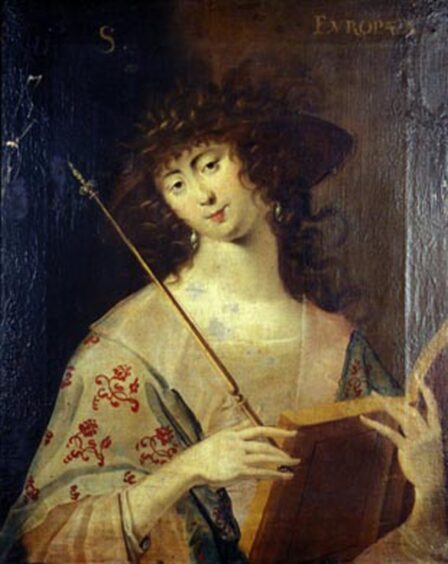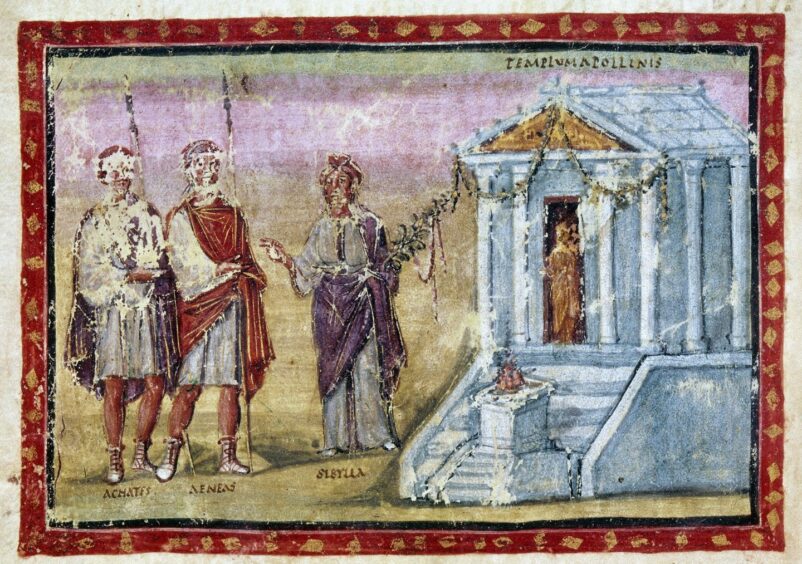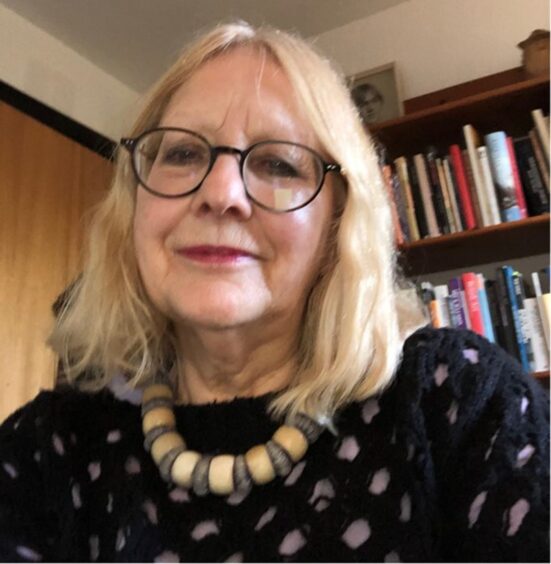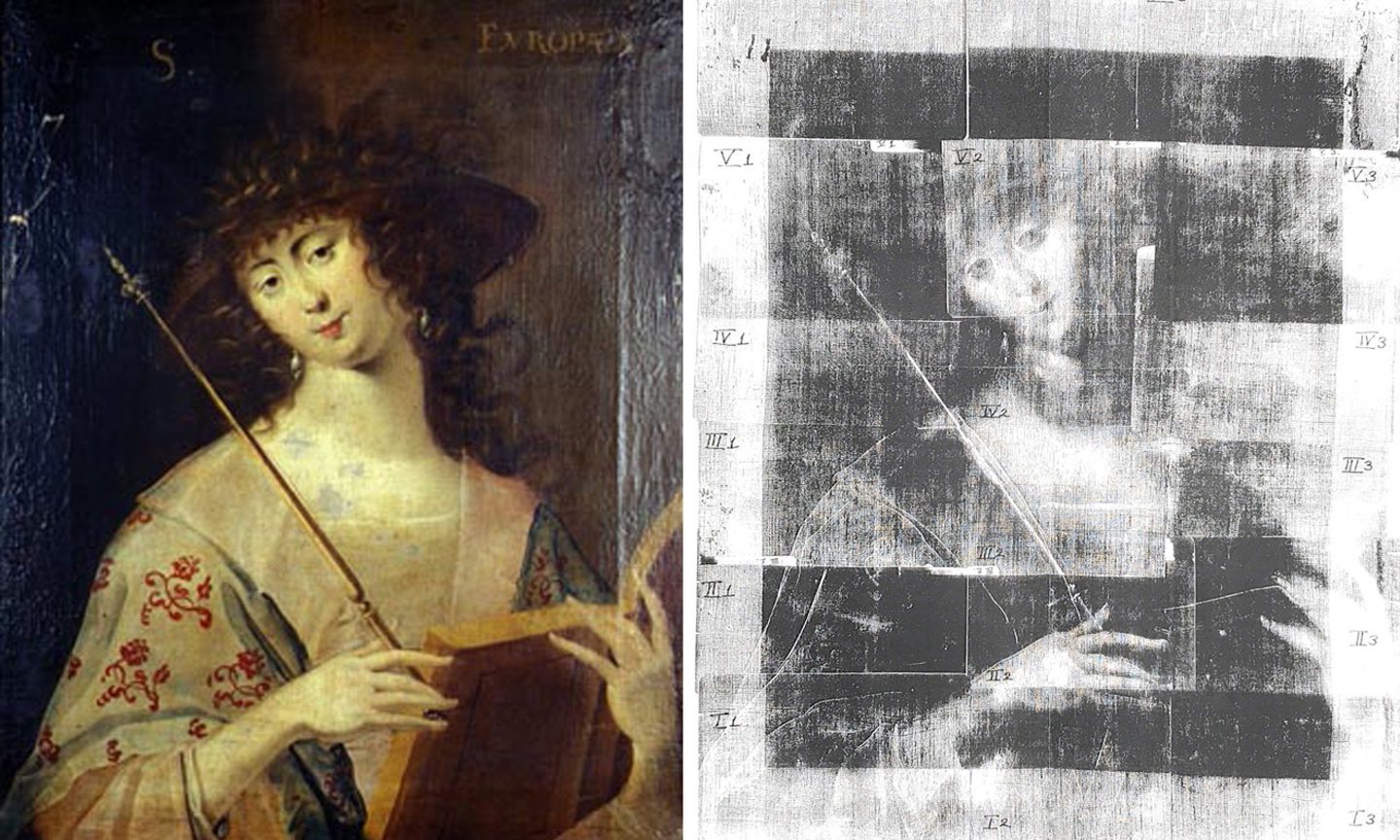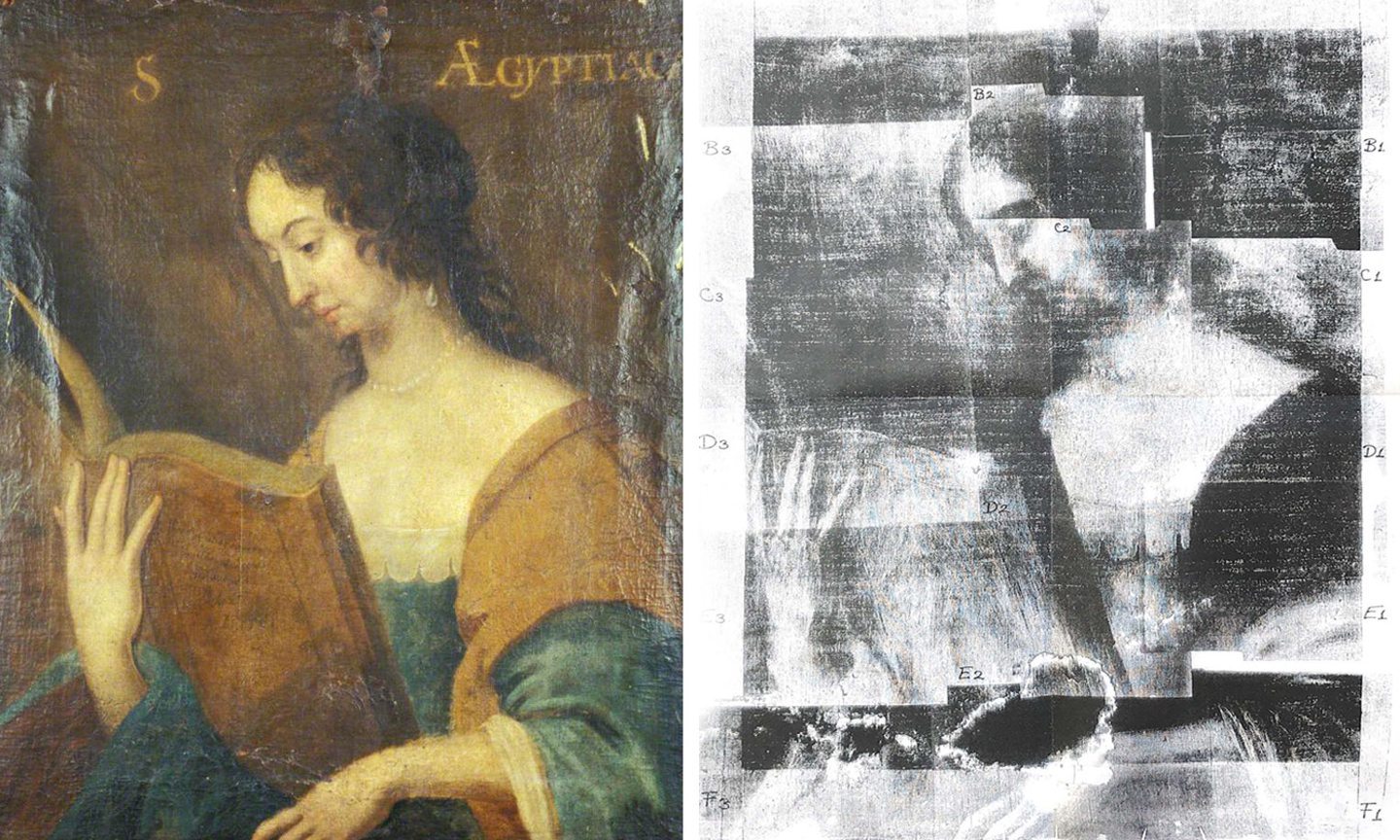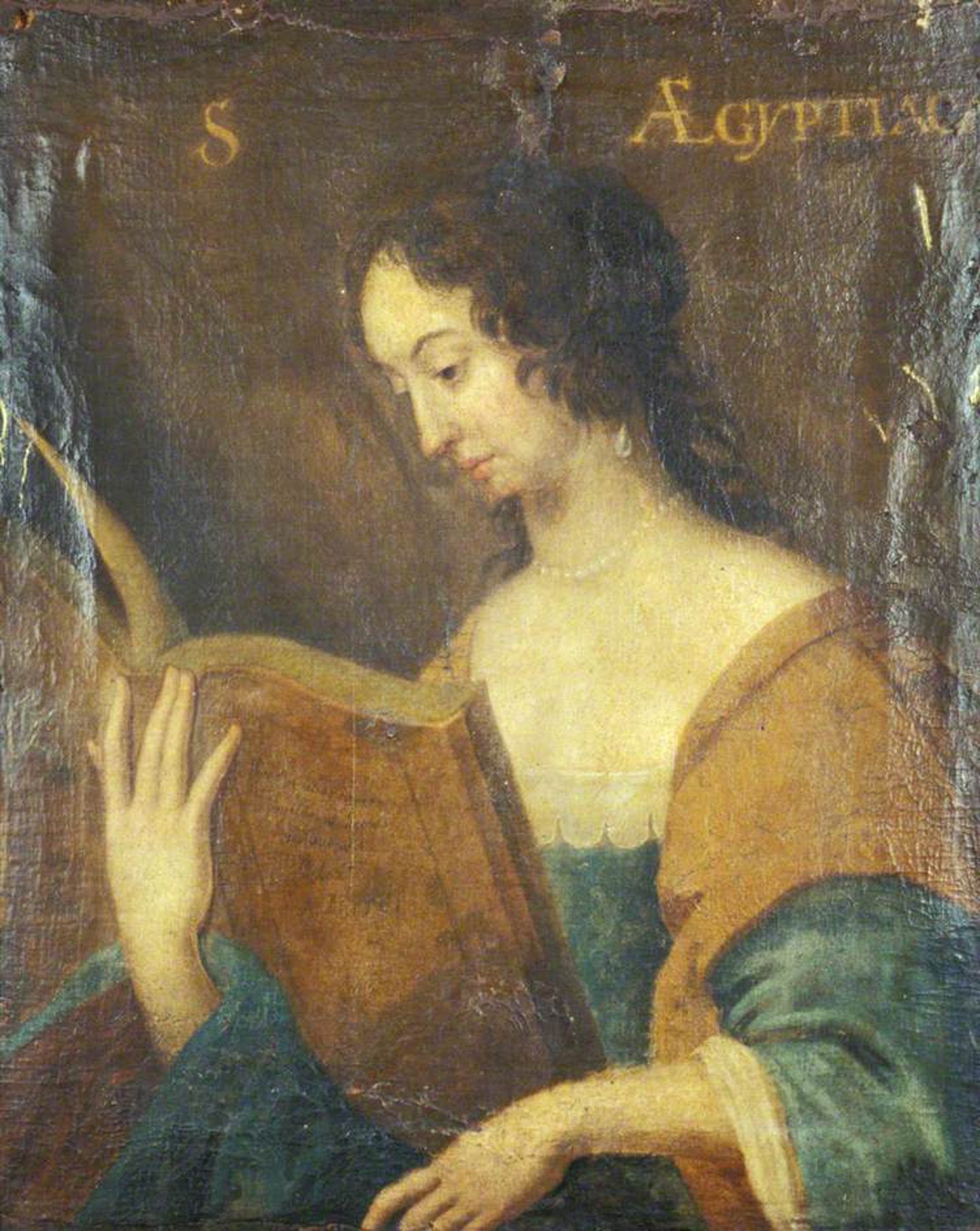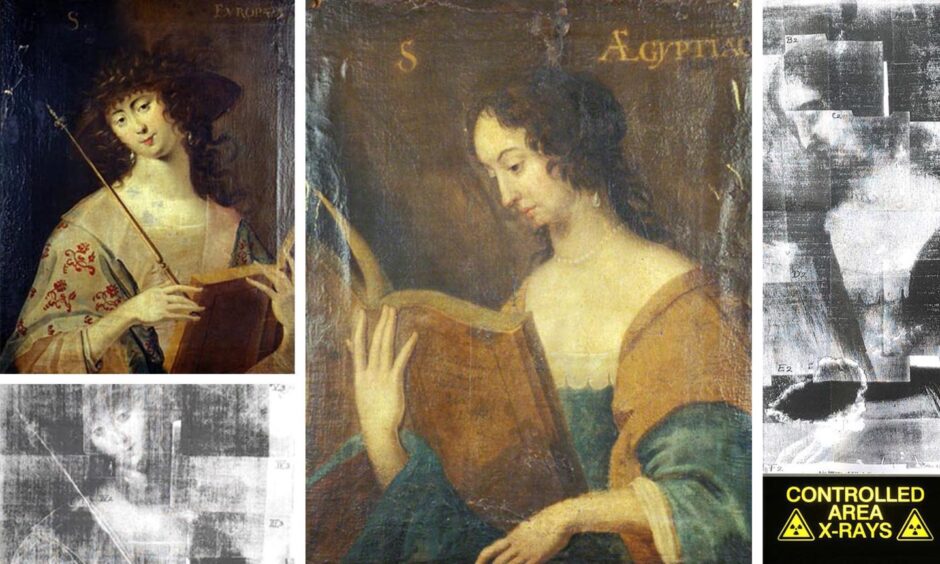
Mammograms have been used to reveal what lies below the surface of a painting currently on display in the University of Aberdeen library.
The painting is an 18th century restoration of a beautiful prophetess painted 120 years earlier.
But mammograms carried out in Aberdeen Medical School have revealed that she’s had an airbrushing worthy of the 21st century to make her look more perfect and on trend for her time.
The Sibyl Europa was one of an original series of twelve Sibyls donated to Aberdeen University in 1641 by its Principal, William Guild. (Guild Street in Aberdeen is named after him.)
Read on to see what hidden secrets the mammograms revealed, and more on the history of these fascinating pieces…
Who were the Sibyls?
The twelve Sibyls were oracles or prophetesses in Ancient Greece, and depicted at that time as old, withered wise women.
Christianity adopted them as seers of the revelation of Christ, and henceforth the Sibyls were westernised and made young and beautiful.
They were representatives of various global regions, and in the Aberdeen collection, the Sibyls of Europe and Egypt were selected for the mammogram treatment by Dr Mary Pryor as part of her PhD thesis.
She was fascinated by the story behind the Aberdeen Sibyls, gifted by the Principal almost 500 years ago, and then left hanging in King’s College for 120 years until they had almost rotted away.
In fact two had disappeared, leaving only ten remaining.
Dr Pryor said: “In 1760, Cosmo Alexander, a north-east of Scotland painter, was commissioned to restore the Sibyls.
“I knew they had been over-painted and wanted to see beneath the surface.”
The mammogram idea came via Aberdeen medical students who attended Dr Pryor’s History of Art classes by way of learning something outside medicine.
A normal x-ray was attempted first, but the rays were too strong and it came out “a bit too ‘Turin shroud’”, Dr Pryor said.
“We then had the idea of using the mammogram machine, which has less intense rays.
“Due to the small plate we had to take 18 mammograms to capture the whole painting, then piece it together like a jigsaw.”
Dr Pryor said the mammograms clearly revealed how male perceptions of beauty had changed across the 120 years between the original and the restoration.
Spot the differences…
“We can see Cosmo restored Sibyl Europa as a powerful woman but also gave her rose bud lips, more of a pout and her cheeks had obviously been rouged, which they would not have been originally.
“He also dressed her in 18th century fashion and fabric.
“Sibyl Egyptia was first painted with quite masculine or severe features, but Cosmo Alexander softened these and changed her lips.
“Cosmo also shortened the extreme length of her fingers, fashionable in the 17th century, so the position of her fingers have changed in relation to her book.”
The Aberdeen Sibyls were hung, somewhat incongruously, in the Common Hall of King’s College, an all-male environment.
Pin-ups for the boys
Dr Pryor said: “By the end of the 20th century they were viewed as ‘pin-ups for the boys’.
“Principal William Guild was a minister of the church and the King’s chaplain, what on earth made him think it was appropriate to have twelve women looking down on them during religious observance?”
It seems rather out of place, until you consider that they were there as prophetesses foreseeing the revelation of Christ.
“That made it all right,” Dr Pryor said. “And it was considered acceptably Protestant at a time when you had to forswear Catholicism and staff had to sign the Covenant to get into King’s.”
The paintings were not attributed to any artist, but oral tradition suggested that the original artist was George Jamesone, well-quoted in Aberdeen and a relative of William Guild.
And the mammograms proved oral tradition right.
Dr Pryor cross-referenced Sibyl Egyptia with other models used by Jamesone and found a match in his Ladies of Glenorchy series.
She said: “There was the same model as used for the Sibyl Egyptia sitting there, and that was an exciting moment when oral tradition was proved right.
“A technology developed for women’s health has helped us to solve a centuries’ old mystery about who painted these remarkable pictures so intertwined with University history.
Changing perceptions of beauty
“But more than that, it shows us how much beauty trends change and how perceptions of what is beautiful are heavily influenced by the societies in which we live – and have been for centuries.
“It’s an important message to consider.”
The Sibyl Europa can currently be seen in the exhibition Striking Impressions in the Sir Duncan Rice Library, University of Aberdeen, Bedford Road, Aberdeen AB24 3AA.
The exhibition runs to October.
More like this:
In photos: Memories of mummies and antiquities at Marischal College Museum
